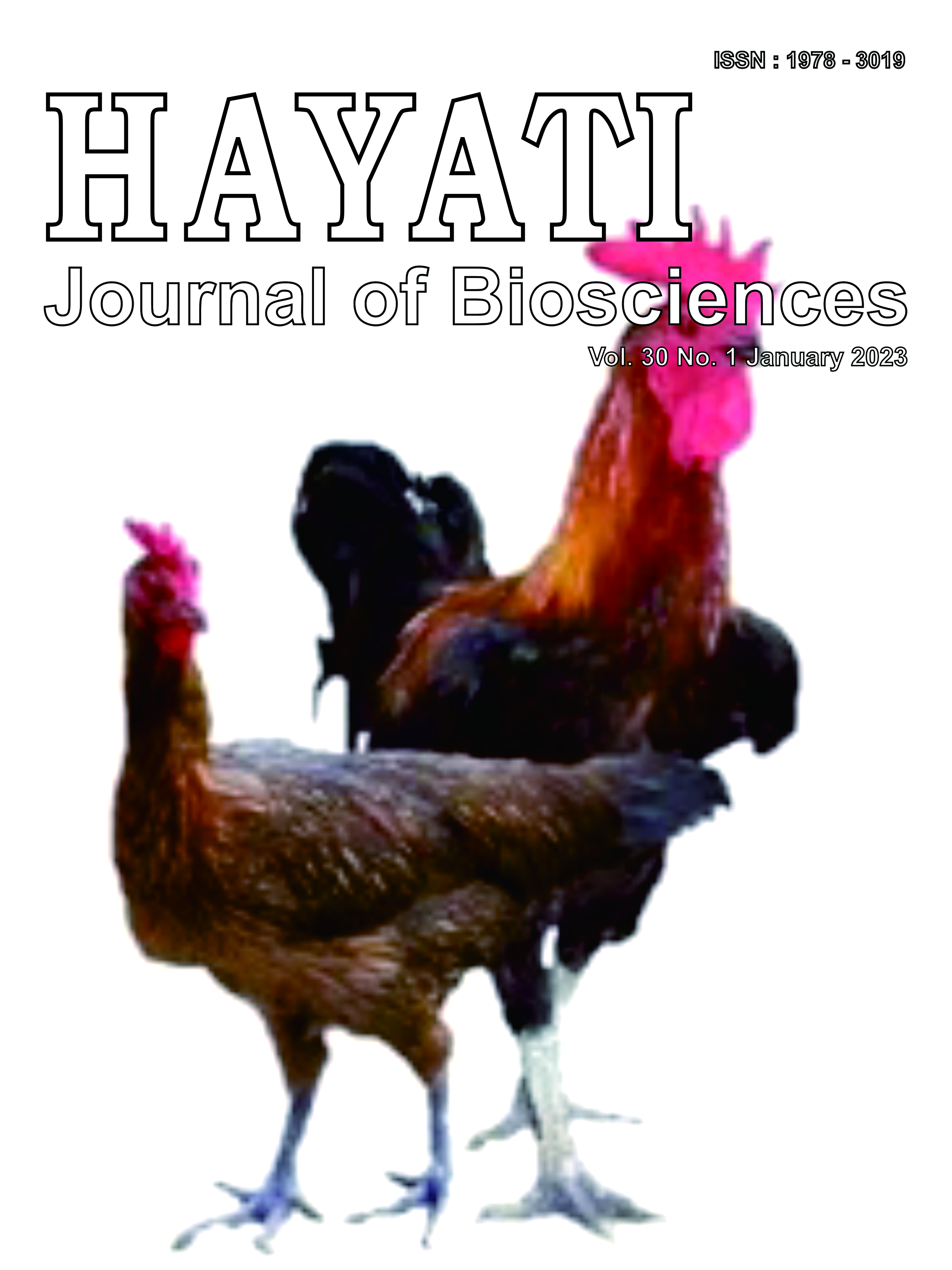Effect of the Coconut Coir (Cocos nucifera) as a Growth Medium for Pleurotus ostreatus (Oyster Mushroom) on Mineral and Vitamin B Contents
Abstract
The oyster mushroom (Pleurotus ostreatus) is the most cultivated mushroom which its growth performance and nutritional composition depend on substrate types. Thus, this study investigated the effect of coconut coir on minerals and vitamins B contents in the oyster mushroom cultivation medium. The composition of coconut coir and Sengon’s sawdust as growth medium were variated at ratios of 4:0 (F1), 3:1 (F2), 2:2 (F3), 1:3 (F4), 0:4 (F5) (w/w). Furthermore, the mineral and vitamin B contents of the harvested oyster mushrooms were analyzed by ICPMS and LCMS, respectively. The highest minerals contents of potassium 26,909 mg/kg, 1,136 mg/kg of phosphorus, 313 mg/kg of magnesium, 4,346 mg/kg of calcium, 15.4 mg/kg for zinc, 2.07 mg/kg of copper, 0.623 mg/kg of Selenium were identified at F1, whereas the highest manganese was at F2 (15.3 mg/kg). Potassium was the highest mineral content in oyster mushrooms in all growth media, and low toxic minerals content of cadmium was detected between 0.015-0.058 mg/kg in all variant substrates. Lead (0.525 mg/kg) and mercury (0.012 mg/kg) was only detected at F1, while arsenic was detected at F4 (0.002 mg/kg) and F5 (0.029 mg/kg). LCMS analysis showed that vitamin B1 (Thiamine), B3 (niacin), B6 (pyridoxine) and B12 (cyanocobalamin) were detected in all growth media, while vitamin B5 (pantothenic acid) was only detected at F5. These results indicated that the P. ostreatus cultivation on coconut coir become valuable nutritional resources to alleviate malnutrition and help dispose of coconut coir in an environment-friendly manner.
Downloads
Copyright (c) 2023 Adi Setyo Purnomo, Atmira Sariwati, Sri Fatmawati, Faradita Eka Puspitasari

This work is licensed under a Creative Commons Attribution-NonCommercial 4.0 International License.
HAYATI J Biosci is an open access journal and the article's license is CC-BY-NC. This license lets others distribute, remix, tweak, and build upon author's work, as long as they credit the original creation. Authors retain copyright and grant the journal/publisher non exclusive publishing rights with the work simultaneously licensed under a https://creativecommons.org/

























.png) IPB University
IPB University Department of Biology
Department of Biology The Indonesian Biological Society
The Indonesian Biological Society 

